Picture Palace Record

MELBOURNE INTERNATIONAL FILM FESTIVAL 2017
ACMI
COMEDY THEATRE
FORUM THEATRE
HOYTS CINEMA
PALACE KINO CINEMA
Thursday 3rd – Sunday 20th August, 2017
after-image
noun
an impression of a series of vivid images retained by the eye after the MIFF2017 stimulus has ceased.
Though I did not find time enough to post about the films I saw throughout the festival, here is my film diary, shared on instagram prior to each screening. I am sharing this here, really, for my own record, but you may enjoy perusing it as well. Much was savoured. Tuck in. Three columns comprised of 55 films seen over sixteen days.
No top 5; my disinterest in creating lists makes me rubbish at them. Besides, I found something to collect, explore, and polish within all.
(Those of you reading this as an email or RSS feed may wish to head to the post to read in order.)

The bright jewel that is #MIFF2017 begins with an aptly named film, RADIANCE (D Naomi Kawase). Here is to #55filmsin16days. Here is to the vivid blaze of it all, and to having the stamina to keep going. To loss and acceptance on screen, and off screen.

Film 02 belongs to THE PARIS OPERA (D Jean-Stéphane Bron), to impart a thing or two about what endurance (and art) really is. “I think dance celebrates what makes us human. When we dance we use, in a very natural way, the mechanics of our body and all our senses to express joy, sadness, the things we care about.
People have always danced to celebrate the crucial moments of life and our bodies carry the memory of all the possible human experiences. We can dance alone and we can dance together. We can share what makes us the same, what makes us different from each other.
For me dancing is a way of thinking. Through dance we can embody the most abstract ideas and thus reveal what we cannot see, what we cannot name.
Dance is a link between people, connecting heaven and earth. We carry the world in our bodies. I think that ultimately each dance is part of a larger whole, a dance that has no beginning, and no end.” —Anne Teresa De Keersmaeker
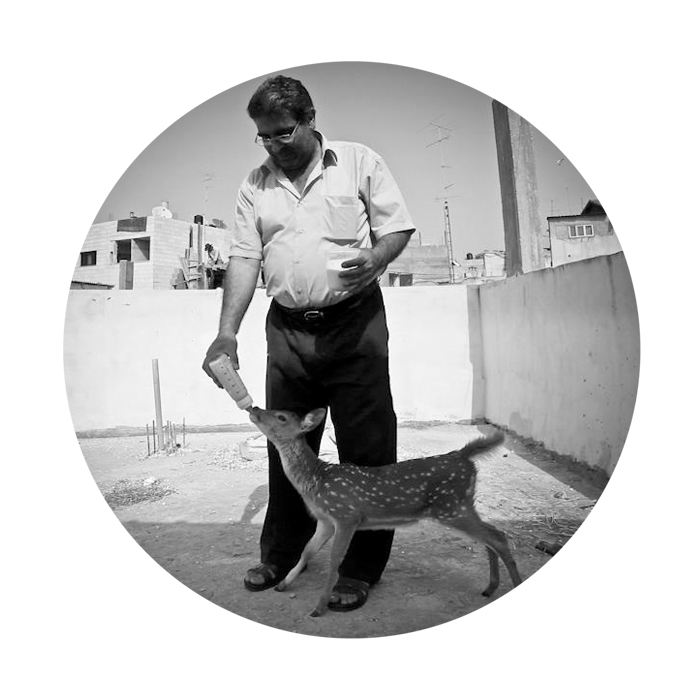
Film 03 finds me WAITING FOR GIRAFFES (D Marco de Stefanis), one of the few animal films I thought I would be able to sit through without needing to hang my head. Let’s see. Though important, I don’t think I have the heart to see STILL LIFE and TROPHY.
“Could love and caring for animals be a first step to overcome the hatred and conflicts between people?” —Marco de Stefanis
Let’s see.

MIFF2017’s final film for the day, at a stumble, me, at an optimistic, hopeful STEP, (D) Amanda Lipitz and the Baltimore girls’ high-school step team. First day, so glorious. Tumble on film 04.
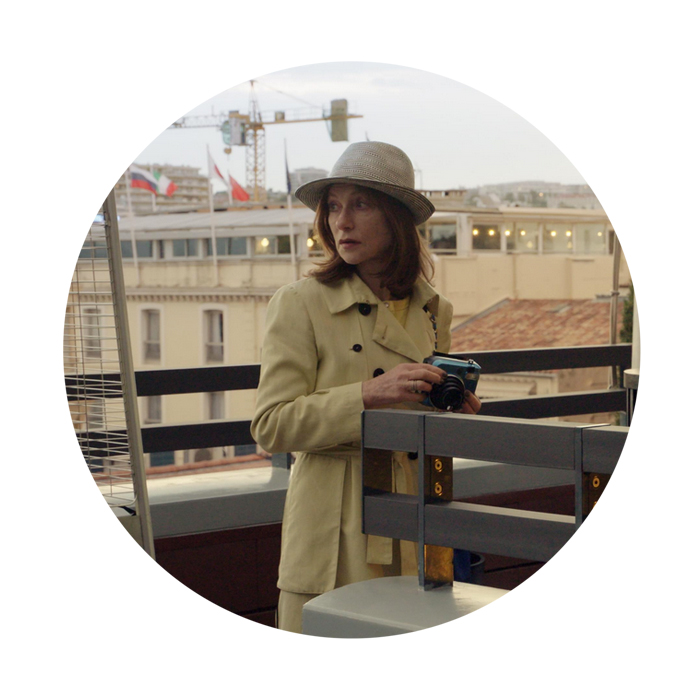
Forgoing yoga for the easeful company of Bob the café dog. At Cannes Film Festival with Isabelle Huppert. Or rather, locating Eric Rohmer’s ‘Claire's Knee’. I mean, MIFF2017 continues with I am CLAIRE'S CAMERA (D Hong Sang-Soo), at the Kino.

Film 06 belongs to DINA (D Dan Sickles and Antonio Santina) and a little frank tenderness.
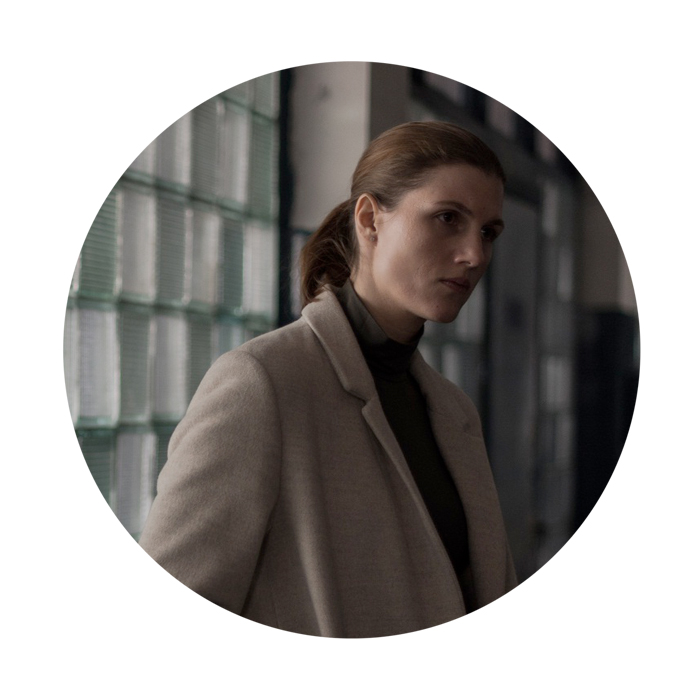
Film 07, LOVELESS (D Andrey Zvyagintsev). With Boris and Zhenya “who make it possible for the viewer to look deep inside into the soul of a person—all his hidden fears, problems, and challenges…. As the mother of Hamlet used to say in Shakespeare, ‘I am looking into your soul, and all I see is darkness, darkness, darkness.’ We are capturing Russian life, Russian society, and Russian anguish at the end of the day. But it’s not specifically Russian. I believe this is very universal.” —Andre Zvyagintsev

The past is the present, and “everything is a memory in the film, but memories can prove even more present. Like grief. You remember details and nature.... How it felt the first time you learned how to float in water. Or, in the Sami’s case, the first time you herded a reindeer…. In my grandparents’ time, you weren’t allowed to eat with forks and knives because people believed that if Sami children got a taste for civilization, they would want that, and they were not developed for that. The belief was that their frontal lobe was not developed, so they would stay a child. People really believed that.” —Amanda Kernell
Film 08 belongs to SAMI BLOOD (D Amanda Kernell).
Postscript: You need to be strong, resilient, and true to your own self.
![With my mask stitched in place, to the kingdom of Patagonia by way of memory’s uncertainty and footage buried in the earth, fragmented with a “French lawyer by the name of Orllie-Antoine de Tounens [who] went to Chile .... in 1858, driven only by th](https://images.squarespace-cdn.com/content/v1/57454cd359827e6ebb6fbead/1503358637114-107MZIIFDNHS8TE83CD9/GRACIALOUISE_REY.jpg)
With my mask stitched in place, to the kingdom of Patagonia by way of memory’s uncertainty and footage buried in the earth, fragmented with a “French lawyer by the name of Orllie-Antoine de Tounens [who] went to Chile .... in 1858, driven only by the dream of establishing a kingdom in the independent Mapuche region of Araucania. Two years later, he crossed the Chilean border-without soldiers, weapons or international aid — and was elected king by the Mapuche leaders…. Rey came into being as I sifted through the many pieces of this king’s story. I imagined a film that evoked an analogous experience in the spectator: a journey through a realm of forgotten dreams, the decaying memories and fantasies of a ghost. And like a fading memory, they remain a chimera to this day, a king and a kingdom that exist only in dreams.” —Niles Atallah, Director’s statement
MIFF2017, REY (D Niles Atallah), to conclude the day.

Under my skin, SAMI BLOOD, identifying with the importance of place and belonging, and the cost of denying (or being forcibly denied) who you are; identifying with the ‘outsider,’ yesterday’s trace. “Tell them we don't just wander.” (Sami herder to ethnographer Robert Paine)
MIFF2017 enters double digits. Film 10, draw it for me, TEHRAN TABOO (D Ali Soozandeh). Animate what can’t be shown, what is prohibited. “By keeping silent we don’t help society evolve nor tackle its problems.” —Ali Soozandeh

Film 11, CALL ME BY YOUR NAME (D Luca Guadagnino). “Ultimately, the real site of nostalgia is not the place that was lost or the place that was never quite had in the first place; it is the text that must record that loss.” —André Aciman (from his essay, ‘Pensione Eolo’)
Postscript: In the opening sequence of Guadagnino’s CALL ME BY YOUR NAME, a bronze statue from the Hellenistic period of a sleeping Eros, the god of love, is visible. In our recent artists’ book, A warmed pebbled in my hand, he, too, dreams. Later, as from the water another sculpture emerges, I am reminded of the Sleeping Boy (Philippe Laurent Roland, terracotta, painted white, c. 1774) also emerging from the water on the cover of our #GraciaLouiseLooped zine. Sweet serendipity, of sorts. And what a beautiful, beautiful film.

Today has to begin with Andrzej Wajda’s AFTERIMAGE, to truth as power. “A work that aspires, however humbly, to the condition of art should carry its justification in every line. And art itself may be defined as a single-minded attempt to render the highest kind of justice to the visible universe, by bringing to light the truth, manifold and one, underlying its every aspect. It is an attempt to find in its forms, in its colors, in its light, in its shadows, in the aspects of matter and in the facts of life what of each is fundamental, what is enduring and essential — their one illuminating and convincing quality — the very truth of their existence. The artist, then, like the thinker or the scientist, seeks the truth and makes his appeal.” —Joseph Conrad

From the blue-painted flowers of AFTERIMAGE, MIFF2017’s festival of the human condition continues with film 13, INSYRIATED (D Philippe Van Leeuw), viewing the whole world in a small, claustrophobic space, taking Kafka’s “axe for the frozen sea within us”.
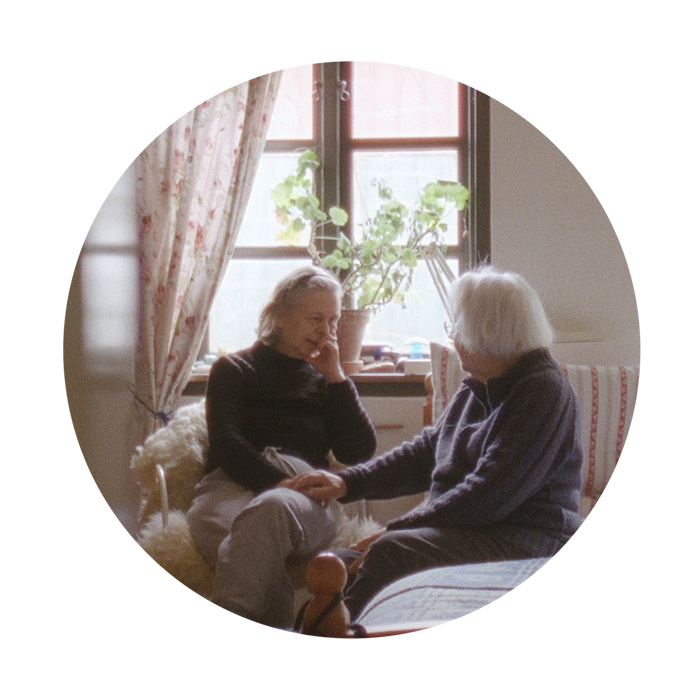
Film 14, LOVING PIA (D Daniel Borgman) and the promise of gossamer.
“I’m tired of grand ideas, and I don’t like simple answers. I’m excited about all the other stuff that’s not clear: being in that cloud of not knowing anything, having a subject who is also in the cloud of not knowing and creating it in a way that's in a cloud of not knowing. What I’ve learned from Pia is that everyone has something strong about them, everyone has something going on, and everyone can have a beautiful perspective on the world.” —Daniel Borgman

Captivated by wildness, hawking my way to the Forum. Ready to head to the desert in the company of several Qatari sheikhs with cheetahs for ‘pets’ for film 15, THE CHALLENGE (D Yuri Ancarani). Other than sharing an admiration for the beauty and strength of birds of prey, will we see the world the same way, I wonder. Sometimes, “what we see in the lives of animals are lessons we’ve learned from the world.” (Helen MacDonald, H is for Hawk)
Postscript: Heartbreaking to see wild animals as status symbol pets in a gold on gold world.

Take your places, arrange your faces, film 16 belongs to FACES PLACES (D Agnès Varda, JR P Charles), at the Forum on the Tuesday afternoon.
“We try to connect with the audience. We don’t want to seduce them. We want them to come with us, and meet people. The film is ours, but now it is yours too.” —Agnès Varda
Postscript: Goats still with horns, a cat on a shoulder, large scale collage, a celebration of collaboration and friendship. Love!
(Agnès! I mean, @elainehaby, with Lottie and a school of fish to paste on the nearest water tower.)
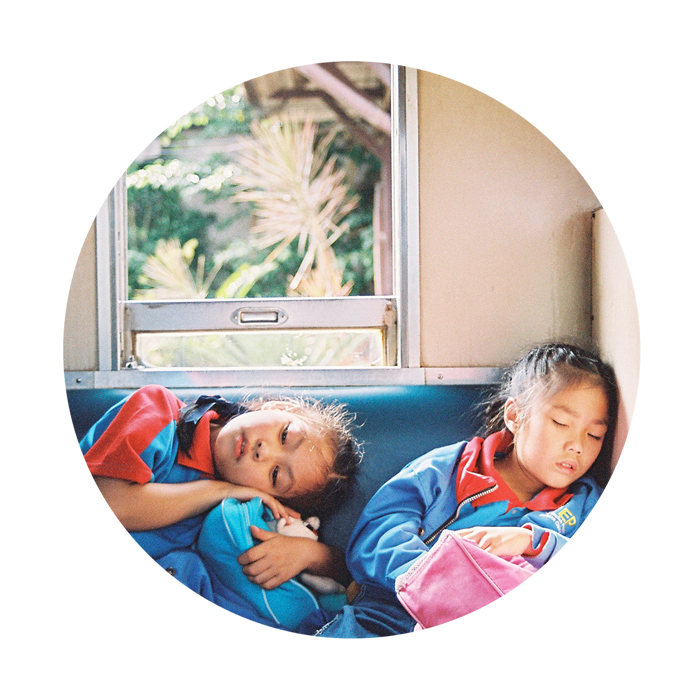
Rattle, rattle, RAILWAY SLEEPERS (D Sompot Chidgasornpongse), MIFF2017 film 17.
“Trains have always been my favorite form of transportation. To me, it is a mobile replica of life itself. It brings strangers together. We cross paths as we move ahead in similar directions but with different destinations. The train is also embedded with a history that reflects the development of my country…. take a journey along the edge of modernity and nostalgia.” —Sompot Chidgasornpongse
Check my ticket, find a seat.

From dozing on the train (RAILWAY SLEEPERS, that hypnotic sound) to Bresson’s Giacometti. Roll on with FINAL PORTRAIT (D Stanley Tucci).
“The human face is as strange to me as a countenance, which, the more one looks at it, the more it closes itself off and escapes by the steps of unknown stairways…. It is impossible to do a thing the way I see it because the closer I get the more differently I see.” —Alberto Giacometti

In our own work, we are beginning to head in a different direction. This is an exciting feeling, but one that has been reinforced for us both thanks to several of the films we have recently seen, which have directly and indirectly spoken about the value of art. From Wajda’s AFTERIMAGE: art has power; truth is power. From FACES PLACES: art can generate change, and collaboration does make a third image not possible without the other. From the limited palette serving to hone one's focus within FINAL PORTRAIT to THE PARIS OPERA, TEHRAN TABOO, RADIANCE et al., we are looking forward to making new work. And from RAILWAY SLEEPERS, CALL ME BY YOUR NAME, STEP, SAMI BLOOD et al., we shall draw the conviction to follow your own path.
Striking a chalk to cheese chord, but rounding out our education all at the same, film 19 belongs to THE TEACHER (D Jan Hřebejk). Hello 1983.

With Michal Novinski’s score (THE TEACHER) still in mind, onwards, to Mexico. MIFF2017 film 20, APRIL'S DAUGHTERS (D Michel Franco).
“I look for the purest and most direct way to generate emotions in the audience, without manipulating their reactions in order to achieve this. I like to focus on human relations, on the intimate connections that emerge…., the way people relate with the outside world and how they project themselves into it….” —Michel Franco

Returning to ACMI for film 21, GIRL UNBOUND (D Erin Heidenreich)
“I want to tell girls, fear is taught; that you are born free and you are born brave.” —Maria Toorpakai
(The Maria Toorpakai Foundation is dedicated to building peaceful communities and gender equity by investing in education, sports and healthcare programs for young girls and boys in remote regions of the world, particularly the Tribal Areas of Pakistan.)

Curses and spindles! Because to me, I love it as a ballet with its Rose Adage. Because it is a fairy tale, retold, and I am curious. Because it will be none of these things. Yes, film 22 calls for SLEEPING BEAUTY (D Ado Arrietta).
“Maybe it’s because I’m a dreamer and I much prefer fantasy to reality; the real world doesn’t appeal to me at all, none of it, not here in Spain or in France — it’s just so utterly tedious!” —Ado Arrietta

From a Carabosse reminiscent of Vivienne Westwood (SLEEPING BEAUTY), film 23, COLO (D Teresa Villaverde) should afford me a much needed spring forward.
“My connections are more poetic, more intuitive than narrative, so it’s important than one image brings another. Sometimes I like when they don’t seem connected. Later on, you may see an echo of something that you’ve seen before.” —Teressa Villaverde (in interview, in reference to her earlier film, Os Mutantes (1998), but perhaps still a means through which to view COLO, at the Forum on a Thursday afternoon.)
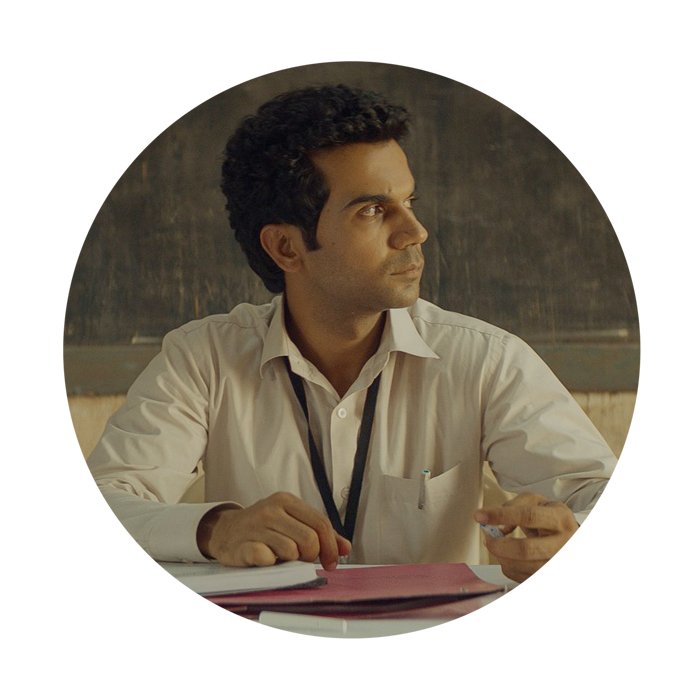
Having waded, slow motion style through COLO with an ailing bird, film 24, belongs to NEWTON (D Amit V Masurkar).
“When political discourse becomes dull, democracy is in danger. When I voted for the first time, I thought my job was done. I had surrendered my destiny to the hands of a stranger and expected him to bring about change. It took me a while to realise the difference between democracy and electioneering and to understand that true democracy will come only when people become political beings and not mere voters. Newton is a dark comedy about an idealist in a less-than-ideal world. India, which boasts about being the world’s largest democracy, takes elections rather seriously, and in conflict areas, it becomes an opportunity for the state to show its ‘tough love’. As Newton tries to find order in chaos, we find underlying elements of humour and absurdity. I have structured the film around Newton’s three laws of motion — the film begins with inertia, develops momentum in the middle act, and ends with an equal and opposite reaction.” —Amit V Masurkar (interview, Meenakshi Shedde, 2017)

Blue skies, cats, and oxen too. “As long as I’ve got a brush in front of me I'm all right.” MIFF2017 film 25, and we are not even halfway, belongs to MAUDIE (D Aisling Walsh).
“Maud Lewis (1903–1970) had no formal training in the visual arts. Like many folk artists, she painted for the joy of adding colour, light and fun to a poverty stricken rural existence. She spent her entire life in and around Digby and Yarmouth counties. In her early thirties, Maud Dowley married Everett Lewis, a poor fish peddler. They began selling Maud’s paintings on their trips throughout the countryside. As Maud’s health deteriorated, she rarely ventured outside her tiny home.
From her small world came a proliferation of paintings depicting a charming rural life full of flowers, cats, sleigh rides, deer, and teams of curly-lashed oxen. Maud painted: boards, rocks, scallop shells and household objects with whatever paints came her way, often marine paints from local fishing boats.
Perhaps Maud’s greatest work was her home. She painted almost every surface of the interior including the stove, windows and the door. After the death of Maud Lewis in 1970, and subsequently of her husband, Everett Lewis, in 1979, the lovingly painted home began to deteriorate. In 1984 the Province of Nova Scotia acquired the home for the Art Gallery of Nova Scotia. Since its restoration, the house has been on permanent public display in the Scotiabank Maud Lewis Gallery in the Art Gallery of Nova Scotia.” (Art Gallery of Nova Scotia, Canada)
Postscript: If you need me, I'll be like MAUDIE. This world!

Because I am partial to open endings, and interwoven tales (in my own work), and believe in change through action (don't we all?), film 26 calls for UNTIL THE BIRDS RETURN (D Karim Moussaoui).
“In a way it suggests that this kind of thing could carry on endlessly…. My idea was to tell a story of people who are asking themselves questions at a moment of their life, asking about the past — because in a way they are stuck in a situation, stuck between their desire and what they are ‘obliged’ to do.” —Karim Moussaou
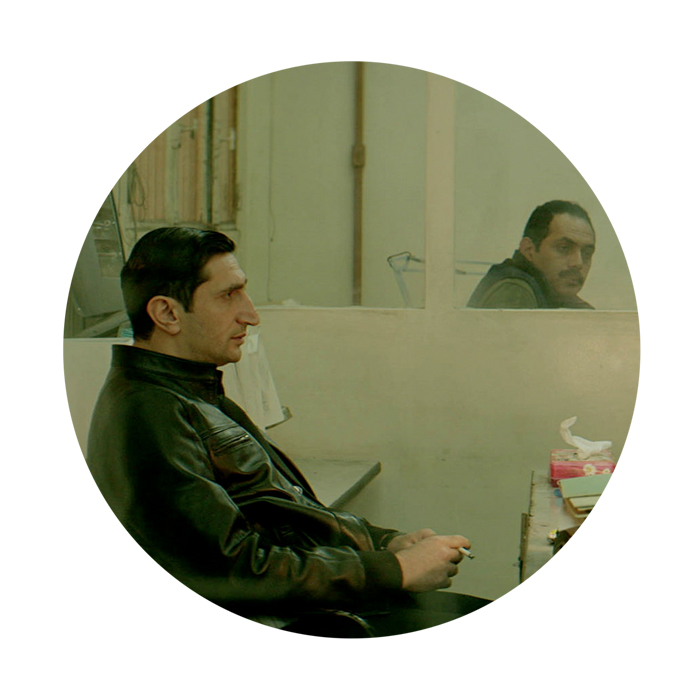
From the hope of UNTIL THE BIRDS RETURN with its glorious and sparing use of music and dance (that ‘it’s complicated’ interlude) to the Forum, to the end of an era, on an easy two-film day; to film 27, THE NILE HILTON INCIDENT (D Tarik Saleh).
“I think the timing [of this film] is perfect for bringing understanding to this region by telling stories that are not only about war, but what happens when a nation is governed by men who are allowed to do what they like. It shows what precedes a revolution….” —Tarik Saleh, in interview with Swedish Film, 2017
Postscript: Feeding the damp-winged lorikeets, doves, and sparrows, and thinking about the birds we have seen so far, from the lonely bird in COLO who ended up in a decoupaged tomb to the lounge room songbirds in THE NILE HOTEL INCIDENT.

MIFF2017 film 28, the “fixed tableaus” of “five paintings and nineteen photographs” of 24 FRAMES (D Abbas Kiarostami). Adding time to a still image on a Saturday morning. “I wanted to show what the painters heard and saw at the time but couldn’t express through their work.” —Abbas Kiarostami
Perhaps also seeking to capture the elusive image the artist sees in their mind’s eye. So hard to secure, as the hands try to catch up with the head. Always chasing. Always working. Inspiration to continue.
Postscript: A songbird’s lament in a wood yard. A balcony of tall owls.
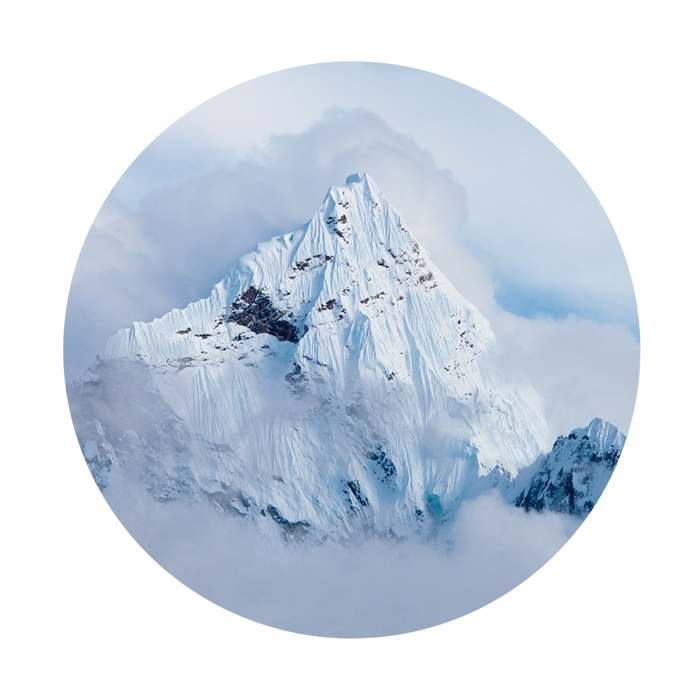
A pas de deux between two horses. A dove’s shadow fading and returning as Ave Maria plays. Livestock weathering a snowstorm. A celebration of the artists’ compositional eye. A window, a frame. Mankind’s straight lines and bullets. Always, foreground, middle-ground, background. 24 FRAMES of corvid swagger and nature’s beauty. My sweet animal love.
Onward now to glacial glide! Film 29, a MOUNTAIN (D Jennifer Peedom) to scale, with Arvo Pärt, Vivaldi, Grieg, and Sculthorpe (Australian Chamber Orchestra).
“Time does not stop or slow down when you are in danger. Everything happens as fast. It is just that — providing we survive them — we subject these periods of time to such intense retrospective scrutiny that we come to know them more fully, more exactly. We see them in freeze-frame. From this moment I remember a rivulet of water running darkly down the rock-rib in front of my eyes, the minute cross-hatchings on the fabric of my waterproof jacket and a little yellow Alpine flower tucked into a pocket of rock. And a sound — the crunching of the talus beneath my feet as I braced myself for impact.” —Robert Macfarlane, Mountains of the Mind: A History of a Fascination
Postscript: Between tree trunks reminiscent of elephant legs, a cat pounced. A painter’s eye. A window as an artist’s canvas. Beautiful. Following on heels of MAUDIE with her reference to a window always framing a scene perfectly, everything after 24 FRAMES felt too fast for me.

Missing my songbird’s lament in the wood yard (24 FRAMES). In awe (though too fast the visual cuts, for me) of mountain bikes making mountain goats of man (MOUNTAIN), and now onward to film 30, LET THE SUNSHINE IN (D Claire Denis). We’re well over halfway now, Toto. Stay a little long next time, Arvo Pärt. Hover in the sublime, Vivaldi.

Film. Memory. And serendipity. Diamond Tooth Gertie’s Gambling Hall. Yesterday I balanced on a gossamer line above a canyon (MOUNTAIN). Today, an altogether different beauty in the cinema awaits.
Gold rush. Fishing camp. Somewhere between 1898 and 1920. Suspended in time. How great the lure! Film 31 has to be DAWSON CITY: FROZEN TIME (D Bill Morrison) at the Kino on a Sunday morning. It is Sunday, right? Or are we already in Tr'ochëk, friends?
Postscript: “The salamander of the ancients was a mythical creature that lived through fire unscorched.” (The Salamander, 1916. Be still, my heart.)
Loved this. All. And so sad, the endless greed of mankind and the devastation of the land. But there was light in what was saved. Alex Somers has created such a beautiful and evocative score for a time past and yet present. Timeless, haunting.

Floating in that liminal state, my own edges, nitrate disintegration (from DAWSON CITY: FROZEN TIME), film 32 calls for the out-of-body soaring of PHANTOM BOY (D Alain Gagnol, Jean-Loup Felicioli).
Postscript: Those tiny footed characters. That orchestral score. The skewed perspective lines within rooms. Loved soaring with this animation.

Because I enjoyed my time with the animals of the green, green wild of Red Riding Hood’s Jin and because “nature never deceives us; it is always we who deceive ourselves” (Jean-Jacques Rousseau), film 33, for me, is BIG BIG WORLD (D Reha Erdem).
“Human beings carry their history of thousands of years inside their cells. When we are first born to this world, even before we start learning things, our bodies know a lot more. That’s the inherited knowledge, which comes from the atoms that form our cells. From the first time we take a breath, this is how this big world embraces us.” —Reha Erdem
Postscript: The beautiful, devastating ache of loss within Erdem’s fable is life, is now, is BIG BIG WORLD. And that arthritic white goat embodying a missing parent in the green magic realism wild.
Two ‘runaways’ in a boat. Snakes, spiders, goats, and frogs. Moments, waterside, within BIG BIG WORLD, reminding me of the animal onlookers within The Night of the Hunter.

This time next week, it will all be over for another year. This time next Monday, I will be pining for MIFF2017, for my time spent pinballing from session to session, from Hoyts to ACMI, Kino to Forum, and back to the Comedy. But let’s not lose our heads just yet. Time for film 34, A GENTLE CREATURE (D Sergei Loznitsa) with a cast that reads: ‘Woman’, ‘Plump Woman’, ‘Man with Plaster Cast’, ‘The Compassionate’, ‘Blue Face’, and ‘Gap Toothed’. Somewhere in a remote area of Russia, am I ready? No. Yes. Let’s go.
(Last week of the fest, still with the promise of gold. THE SQUARE, BOBBI JENE, Haneke, and other fables. MIFF2017, you beautiful beast.)
![Film 35 calls for a black and white heartbreak. LOVER FOR A DAY (D Philippe Garrel), because, in part, it is nice to stay in the same darkened cinema for the next session, and because “I’ve been [we’ve all been] had by love.” Kisses before we p](https://images.squarespace-cdn.com/content/v1/57454cd359827e6ebb6fbead/1503304471826-J0U3SS5LA5UVVN8PCDV3/GRACIALOUISE_Lover01.jpg)
Film 35 calls for a black and white heartbreak. LOVER FOR A DAY (D Philippe Garrel), because, in part, it is nice to stay in the same darkened cinema for the next session, and because “I’ve been [we’ve all been] had by love.”
Kisses before we part, #55filmsin16days.
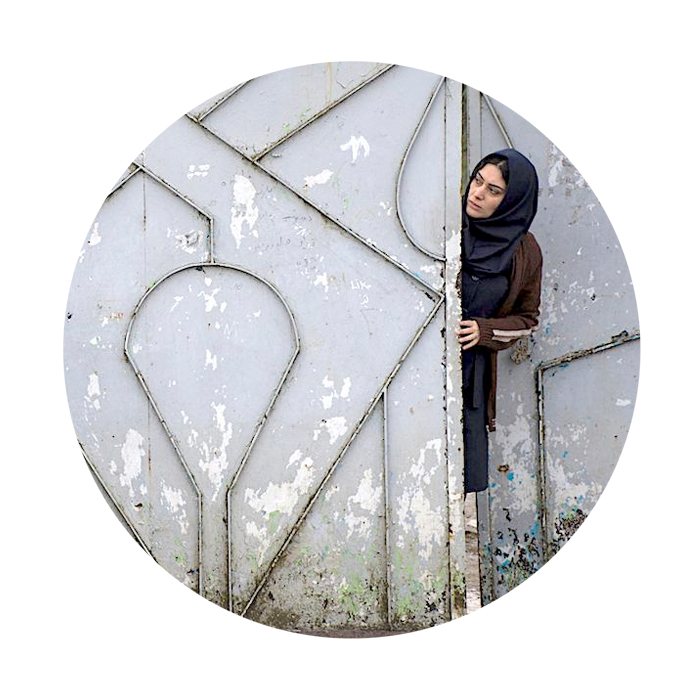
Injustice and corruption filmed in secret to draw Monday to a close. Film 36, A MAN OF INTEGRITY (D Mohammad Rasoulof). “When I start to shoot the script, for me the selection of cast and crew is the most important element. When I select crew members because of their expertise, I attach equal importance to how well I can communicate with them. This communication has a direct effect on the quality of the project. I think that a great filmmaker draws most pleasure sharing his emotions with his crew. Creating a film is a collaborative process. I belong to that lucky group for whom the filming process is calm and pleasurable. Even when we’ve been shooting in secret and without permit, in a fearful and anxious atmosphere, we’ve tried to react to the fear by humor and optimism.” —Mohammad Rasoulof (Tarik Khaldi, Festival de Cannes)

A circus, or an orchard. Oklahoma, a utopian promise. Film 37, with reference to Kafka (once more), and playfulness. Danke schön, SELF-CRITICISM OF A BOURGEOIS DOG (D Julian Radlmaier). On the heels of the corruption in Egypt (THE NILE HILTON INCIDENT), Russia (A GENTLE CREATURE), and Iran (A MAN OF INTEGRITY), and the greed and disregard of man plundering the landscape (DAWSON CITY: FROZEN TIME etc.), this might be just what I need.
“….for me the message of the movie has something to do with individuals getting the rights to speak in their own words and think what they want to think…. When I get the chance to laugh at something, I feel as a viewer, respect. Someone who can watch something, who can make his opinion about something, who can laugh about something, …. engages my intelligence in another way. If it were a melodrama or a realist movie that just tries to convey a message I would feel much more that someone wants to push something into my head. I hope this way it creates a freer and more joyful relationship between the movie and the one who receives it, [that] this freedom and joyfulness is always something you take out of the movie. Perhaps this is, in a way, the message. This experience you make with the movie is perhaps an experience that should be translated into structures of society. If I see a Chaplin movie I laugh a lot and I get the feeling [for] how a good society could work much more than if I see a well-meaning social drama.” —Julian Radlmaier
Animal highlights postscript: THE SQUARE’s proper Italian greyhound; the disinterested digging of a deliciously edible carmel-hued BOURGEOIS DOG; the release of SPOOR’s fox farm prisoners, and other wildies; the arthritic goat Dad in a BIG BIG WORLD with its button spiders et al.; COLO’s bird in the hand, bird in the coffin; foreground sausage (cameo) in HOSTAGES. To say little of the pathway blocking giant café dog of CLAIRE’S CAMERA! With an honourable mention to: MAUDIE’s working pup duo; FACES PLACES cat curl, and (still) horned goats; THE PARIS OPERA’s musical bull on stage, still and majestic.
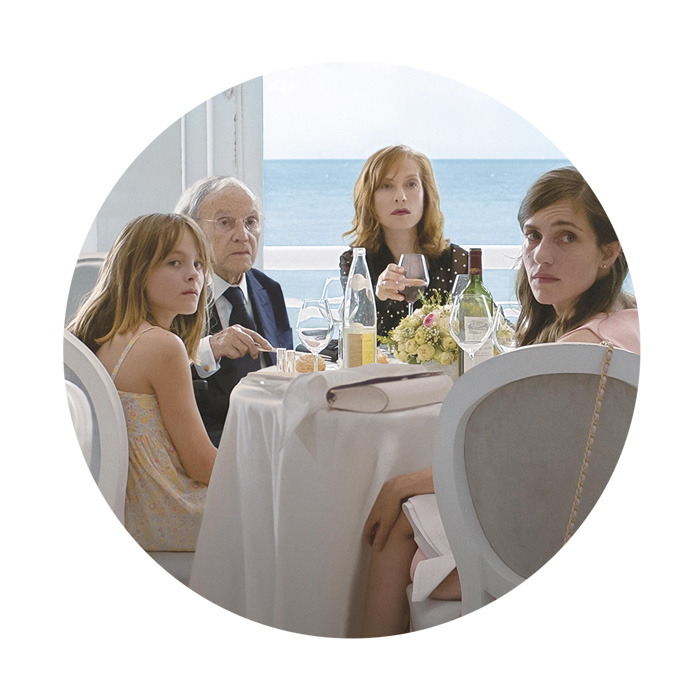
(Leaving that handsome if reluctant to dig, caramel greyhound and fast stepping like the monk in BOURGEOIS DOG.) Ready to be buttoned up at the table with Georges, Anne, Thomas, and company for film 38, HAPPY END (D Michael Haneke), or otherwise (though please spare the hamster an overdose, Eve; no chance, I know), at the Comedy.

“Please, could you say something in Zikril? I'd love to hear it in your own voice.”
The promise of a fading language, recorded for posterity, for memory, for love, for film 39. Listening, dreaming still, on a Wednesday morning. I DREAM IN ANOTHER LANGUAGE (D Ernesto Contreras).

With my timber chair over my shoulder, somewhat reluctantly leaving the lush green enchantment of I DREAM IN ANOTHER LANGUAGE for the 80s. “Are you afraid we’ll try to swim to Turkey?” Film 40, in the Black Sea of HOSTAGES (D Rezo Gigineishvili) calls.
Postscript: Yesterday’s BOURGEOIS DOG (with its “communism without communists” and talking sparrows) and Haneke’s HAPPY END with three very fine hounds indeed. Today, a dachshund in HOSTAGES in the foreground of a square (as well as the wonderful sounds of an orchestra tuning their instruments as goodbyes are made). And thinking of Lottie’s MIFF2017 tales on @pasadenamansions.

Eating cake before dinner in Tbilisi. In Georgia, still, tucking my hair behind my ears. Film 41, MY HAPPY FAMILY (D Nana & Simon).
“During my childhood I saw how women in my family spent their lives giving to others. They did what society dictated. The most important thing for my mother was her family, her children, her husband — no matter what. As we got older, my sister and I asked her, ‘Why are you doing this? Now it’s time for you to do something for yourself.’ And then she started doing her own thing, taking piano lessons and some other banal things. It’s not just my mother who was like that, but a lot of women. They have many abilities and a lot of talent, but aren’t able to realise them. This also affects young women in my generation. All this inspired me to tell a story about an ordinary woman who spends her life serving others while remaining free and independent inside. Nothing in her has died. It’s all still alive — this small light shining from within.” (Screenwriter Nana Ekvtimishvili in interview with Brigitta Wagner, Senses of Cinema, 2017)

From the Georgian A Room of One’s Own (MY HAPPY FAMILY) with a traditional song in my ear and the taste of cherries, up the hill, with what we have left. Film 42, THE PARTY (D Sally Potter), in glorious black and white awaits. The perfect cap to a four-film day, we have been assured.
“In one sense, the entire film is a political comedy, but it’s a light and loving comedy, a light and loving look at the state of England, a kind of broken England. But the film is more of a meditation on the notion that politics is everywhere, including in human relations. The most important thing is the language of truth-telling and the healing power of love in overcoming tragedy, but watch out if you’ve got a gun in the laundry basket.” —Sally Potter
Postscript: LOVELESS; BIG BIG WORLD; INSYRIATED; THE PARTY; MAN OF INTEGRITY; COLO (is me), et al., we are the most terrible creatures.
![Film 43, BLUE (D Karina Holden), because “at least 8m tonnes of plastics [is leaked] into the ocean — which is equivalent to dumping the contents of one garbage truck into the ocean every minute. If no action is taken, this is expected to increa](https://images.squarespace-cdn.com/content/v1/57454cd359827e6ebb6fbead/1503304684922-59C2U1BNG32B6BQ60VMG/gracialouise_BLUE.jpg)
Film 43, BLUE (D Karina Holden), because “at least 8m tonnes of plastics [is leaked] into the ocean — which is equivalent to dumping the contents of one garbage truck into the ocean every minute. If no action is taken, this is expected to increase to two per minute by 2030 and four per minute by 2050. In a business-as-usual scenario, the ocean is expected to contain one tonne of plastic for every three tonnes of fish by 2025, and by 2050, more plastics than fish [by weight].” (Ellen MacArthur Foundation)
Postscript: Oak Struck by Lightning, Badger, 1856 (detail), albumen silver print from paper negative by Alfred Capel Cure (1826–1896), as an analogue for #MIFF2017 feels.
Take 3 for the Sea

“From now on it's just you and me.” Two peas in a pod, “old, fat and homeless,” umbrella aloft.
Returning to homeland, peace, possibly, and nature, film 44, POP AYE (D Kirsten Tan) “….because elephants, both in Thailand and in the wider world, …. kind of symbolise hopelessness. So much of the forest in Thailand has been cut down…. So then a lot of times these elephants have become forced to live among men. So then this idea of finding a home and that home still exists also came about when I was thinking about elephants.” —Kristen Tan (in interview with Jeremy Elphick, 4:3, 2017)

Full circle. Leaving POP AYE (Bong) the elephant. A square as a gathering point, hostile design in public spaces to discourage lingering, sleeping, and all things inappropriate (at the Comedy Theatre), and the promise of a little performance art. Film 45, THE SQUARE (D Ruben Östlund).
“I think that everybody has a relationship to the topics and the thematics of The Square. I really, really hope that people will still be interested in going to the cinema to both be entertained and laugh, but at the same time have something to deal with when you leave the cinema. To talk about what you have seen. I’m curious, very curious.” —Ruben Östlund (in interview with Scott Roxborough)

Though the gap between sessions is tight, very tight, I don't want to miss film 46, with former Batsheva dancer BOBBI JENE (D Elvira Lind). To breaking boundaries. To creative independence. And staying true to your own voice. *heads into the darkened cinema just as the ads finish and the lights dim* Made it. Phew. Let’s go.
Postscript: Dance is language. Movements are words. And it was in these moments BOBBI JENE was at her most eloquent, powerful, and open.

Yesterday, ghost nets bound turtles like an art installation worthy of THE SQUARE, elephants’ cried, and choreographic wings were forged.
Joy and sadness, lift and drop, the effort of pain and the effort of pleasure, occurring simultaneously, always, in every movement in and outside of a piece. Recurring motifs of delicate movements that become more delicate and wild movements that become more wild, if there was one thing I wanted more of in Elvira Lind’s BOBBI JENE it was dance and process, but here, I am being greedy.
“When I perform, I just try to stay really honest and true to what I’m sensing inside my body, and that comes before any sort of thoughts or motives or desires. I’m staying true to what happens in the body first instead of what happens in my mind first.” —Bobbi Jene Smith
Today, a last minute, last days MIFF2017 schedule shuffle to play a game pétanque in Scandinavia, film 47 is THE GIANT (D Johannes Nyholm). I have played squash in Pakistan (‘Girl Unbound’), now let’s see if I can roll the ball as close as possible to the cochonnet (a tiny wooden ball, aptly called a piglet). Guided by a 200 ft giant, no less.
“To me, film-making is a play. I want to feel free and fly unhindered through different cinematic expressions. I don’t like to get trapped in a certain form or shape. I want to give the viewer a ride into the unknown, into new exciting worlds where rules come and go and irrationality plays a big part. In this film the idea was to have a strong documentary fundament to make the audience relate to and identify with the characters, before gradually giving them stronger and stronger wings, so they could fly and watch the world from another perspective. The fairy tale aspect is important to me to communicate with the inner child in people, especially, since this story stems from the inner child in me.” —Johannes Nyholm
![Chasing THE GIANT with a different kind of fairy tale, where “every time he moved snow fell from him like icing sugar from angel wings”. Film 48, because Bohemia, with “the deer …. standing in snow that came almost up to their bellies [gazing] at us](https://images.squarespace-cdn.com/content/v1/57454cd359827e6ebb6fbead/1503304745443-8ZAKRZ149Y6CUQQ38T7P/GraciaLouise_SPOOR.jpg)
Chasing THE GIANT with a different kind of fairy tale, where “every time he moved snow fell from him like icing sugar from angel wings”. Film 48, because Bohemia, with “the deer …. standing in snow that came almost up to their bellies [gazing] at us calmly, as if we had caught them in the middle of performing some ritual whose meaning we could not fathom” (Olga Tokarczuk, Drive Your Plow Over the Bones of the Dead). Knocking on the wooden door covered in black tar paper at the Forum. SPOOR (D Agnieszka Holland), I await.
“Even though you may consider it a dark eco-thriller, the film reflects our world and where we stand. I had no idea that the movie would be so up to date, since we were working on the project for a long time, and owing to events in the world, Spoor also proved to be political.” —Agnieszka Holland (in interview with Martin Kudláč, Cineuropa, 2017)
Postscript: Toss me a stick; comfort a boar. Of all the films seen so far, the character we felt the greatest affinity with and perhaps resemble is Duszejko in Agnieszka Holland’s “a bit like a fairy tale about anger”, SPOOR (Pokot), and this is a very good thing indeed. And with only a handful left to see, running through the wild it is likely to remain. Our resolve to keep fostering for RSPCA Victoria is strengthened.

Roe deer, fox, badger, and wild boar. With a hankering to stay in the forest (SPOOR) and read what author Olga Tokarczuk describes as a “metaphysical thriller”, Drive Your Plow Over the Bones of the Dead. But on this wet night, such plans will have to wait, William Blake. Film 49 is taking us to the Democratic Republic of Congo with the promise of the Symphonic Orchestra of Kinshasa performing in an old warehouse the compositions of Arvo Pärt et al. FÉLICITÉ (D Alain Gomis), rounding out a three film day. Ready and crumpled as we'll ever be. Light the fire, hedgehogs. I’ll be home soon.

Be still the heart. Alexandra Exter’s (1882–1949) costume and set design for AELITA. If I can’t live in a remote hut in SPOOR, surrounded by deer, stoats, boars, and magpies with an eye for all things shiny, perhaps constructivist Mars, for something different. Draw my eyebrows like yours, Yuliya Solntseva. Frame me in a geometric shape, Nikolai Tsereteli. Film 50 belongs to AELITA, QUEEN OF MARS (D Jakov Protazanov), which the New York Times referred to in 1929 as being “far more interesting to read about than to gaze upon”. Pluto to that! Let me wear one of your Martian costumes, Alexandra Exter, and feel as though I am hovering in a machine age of aluminum, glass, acrylics, and steel. 1924, in motion.
Postscript: With big love to I DREAM IN ANOTHER LANGUAGE; RAILWAY SLEEPERS; AELITA (costumes and set, and live score by The Spheres); UNTIL THE BIRDS RETURN; CALL ME BY YOUR NAME.

Quick costume change. Paint me, manga. A different kind of time machine awaits with film 51, IN THIS CORNER OF THE WORLD (D Sunao Katabuchi).
“I knew I wanted to become a visual storyteller first and I feel that I was able to discover that animation was the most interesting way to tell stories. Because we recreated a world that once existed, the audience sees more and more details every time they re-watch the film that leads to the discovery of different emotional experiences and perspectives. For those who are seeing In This Corner of the World for the first time, I hope they will see it more than once. By doing so, they will be able to experience the world and society that once existed in a very raw way. I'd like to think that In This Corner of the World is like a time machine where you can experience life and a culture of a different time.” —Sunao Katabuchi

“I don’t know anything with certainty, but seeing the stars makes me dream.” 65,000 frames. 1,000 canvases. Colour me curious, and twinkle my heavens, film 52, LOVING VINCENT (D Dorota Kobiela, Hugh Welshman). “I dream my painting and I paint my dream” (Vincent van Gogh) seems a very good place to begin the last day of the fest.
Postscript: For charging us in our own work to take a new direction: FACES, PLACES; 24 FRAMES; REY; BOBBI JENE; LOVING VINCENT; PARIS OPERA.

(What faith in humanity (LOVING VINCENT) restored, our next film is sure to erase.) Call memory forth, and bid it to slow down. Film 53, AUSTERLITZ (D Sergei Loznitsa).
“It seems to me then as if all moments of our life occupy the same space, as if future events already existed and were only waiting for us to find our way to them at last …. And might it not be, continued Austerlitz, that we also have appointments to keep in the past, in what has gone before and is for the most part extinguished, and must go there in search of places and people who have some connection with us on the far side of time, so to speak.” —W. G. Sebald
Postscript: For what was, and what is: AUSTERLITZ; DAWSON CITY; SPOOR; COLO; MY HAPPY FAMILY

Branded t-shirts. Selfie sticks. Holocaust tourism. Observed. Accountable. AUSTERLITZ. With heavy heart, we leave the cinema. Humanity! Oh! Sunk!
And with our heavy hearts, we’re almost there. At the Comedy Theatre. Our second last film. Over to you, MIFF2017, film 54, IN THE FADE (D Fatih Akin). A proposition: “‘what would you do?’ So ask yourself” (Fatih Akin). Okay. Accepted.

#55filmsin16days draws to a close with film 55 BEUYS: ART AS A WEAPON (D Andres Veil). Originally booked when it was to screen on the last Saturday night of the fest, it is to be our full stop. It is perhaps not the ending we would have drawn up, but it is anticipated all the same. In 2003, when Louise and I were invited to give our first talk in a gallery about our work as part of a group exhibition, we combined our book vouchers as payment to purchase a copy of Joseph Beuys: The Multiples. With soft hearts, felt-suited, we enter the cinema. How to Explain Pictures to a Dead Hare, quite.
“Art alone makes life possible. this is how radically I should like to formulate it.” —Joseph Beuys
Postscript: Beuys, my body has turned to ash. (Never meet your idols.)
At the close, the colour palette I choose to live within remains: SAMI BLOOD; AFTERIMAGE; FINAL PORTRAIT; CALL ME BY YOUR NAME; SPOOR.
Ah, MIFF2017, you were wonderful. You are missed. Come quick as you can, MIFF2018. Quick as you can. X
Image credit: Promotional image from Agnieszka Holland’s film, Spoor (2017)